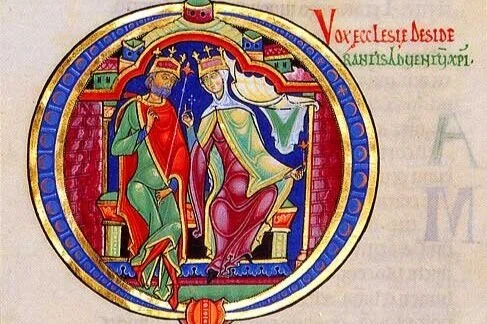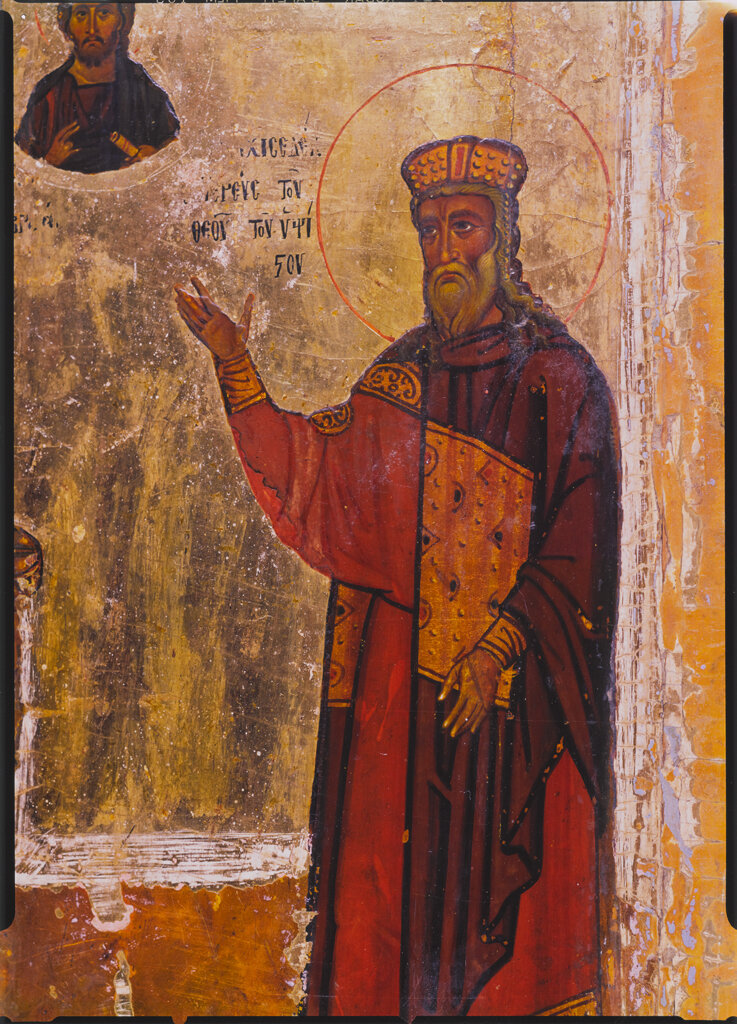O Lord save your people and bless Your inheritance, grant victory to our country over it enemies and preserve Your community by the power of your Cross, and the measure of your victory is peace.
Pictorial Allegories of the Love of God Inspired by the Song of Songs - Part 2
A Classic Book on Art and Beauty to Be Republished: The Beauty of Holiness and the Holiness of Beauty
Ron Gaudio's blogpost on Pythagoras and his lasting influence on Western Civilization
For Pythagoras and many other Greek philosophers, the beauty of the cosmos reflected not only a harmonious order but divinity itself. That is why they were also a community that worshipped. Pythagoras’s legacy reached even to the United States, being responsible for the architectural beauty of Monticello, Harvard Hall, and the Capitol Building.
Report on the March for Eternal Life - and notification of more Pilgrimages coming this year.
The 2nd Annual March for Eternal Life, May 29 & 30, Point Reyes to the Golden Gate, Marin County, CA
How to Find Catholic Works of Art at Auction Houses, and How to Bid
Quiz for Greek Scholars! Who Is The Figure Kneeling Before Melchizedek in this Icon?
A reader wrote to me recently asking me to identify the kneeling figure in the icon below. The two standing figures are Abraham on the left and Melchizedek on the right. The question he had was who is the figure kneeling before Melchizedek? It originates from Mt Sinai and is part of a catalog of color transparencies and slides stored at Princeton University which are part of the total documentation that was produced by the Michigan-Princeton-Alexandria Expeditions to Sinai in 1956, 1958, 1960, 1963, and 1965. These images document the icons at Sinai. The remainder of the photographic archive is stored at the University of Michigan.
In his note, he suggested that it looks as though it is a bishop from the vestments and that the text appears to read Adelphostheos...
which I think is a Greek name (James Adelphos) used for James the Just, the first bishop of Jerusalem (which perhaps connects him to Melchizedek, the first priest of Jerusalem).
I was no help to him whatsoever! I can't read Greek, I didn't recognize the icon and I don't know anything about James the Just. I thought therefore, I would throw the question open to readers of the Way of Beauty. Any ideas folks?
I have an additional question for you. Why would this figure be kneeling in front of Melchizedek? The attitude the figure adopts is such a deep prostration that my instincts tell me that this is one of worship, which is due to God alone. Am I overreacting here do you think?
A number of explanations to this do occur to me:
First, worship is primarily an interior act. Clearly, there is deep respect here, but this prostration doesn't necessarily indicate worship and I am simply misreading the posture. Our bishop is in fact venerating Melchizedek.
Second, perhaps James is not kneeling before Melchizedek, but before Christ, who is shown at the top of the icon. It would be easy for someone who wandered into any Catholic Church during Mass when the congregation was kneeling and didn't understand what they were seeing to look at the assembly and seeing them kneeling en masse before the celebrant and interpret that as priest worship. There is a practical difficulty that the artist has to overcome here that might have pushed him into portraying the figure this way. If he was to paint the bishop kneeling before Christ, as portrayed, he would be kneeling so that the only view of him that we would have would be his rear end. This is not only undignified, it breaks the convention of iconography which says that all saints must be seen in full or three-quarter profile so that both eyes can be seen. In order to accommodate this, the iconographer, one might argue, has played with the perspective here and shown the figure looking upwards as though Christ is above him and nearer to us than he is, so allowing the bishop to turn around and face us. A similar argument, incidentally, might apply to the gaze of the standing figures too.
Third, he is kneeling before Melchizedek, but only insofar as he recognizes him as in persona Christi.
Again, any thoughts on this? There might be a clue here (which again I am not able to interpret) in that the bishop is holding something. Again, I am not sure what this is. There is very little information about the original icon on the Princeton website.
Essays on a Catholic Approach to Ecology - A Response to Anti-Human Environmentalism
The Frescoes at St Francis of Assisi, Baddesley Clinton, England, Part 3 - the Chancel Arch Images
My hope is that every person in this parish is catechized so as to understand the images they see. Then, when people visit the church to see the paintings, as they surely will, any parishioner can be a docent who takes them on a tour of the church and in so doing becomes an evangelist for the Faith.
















